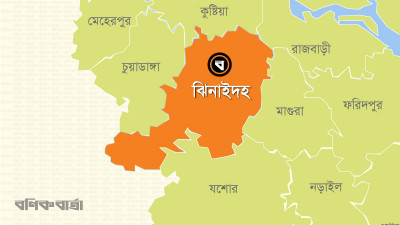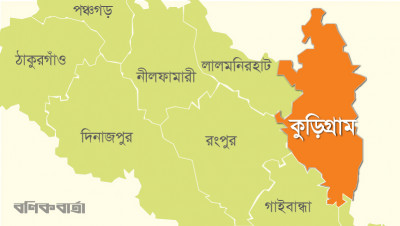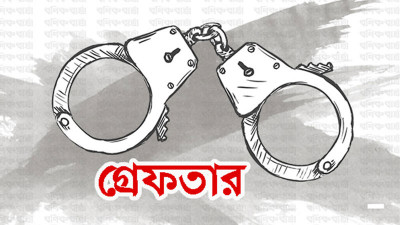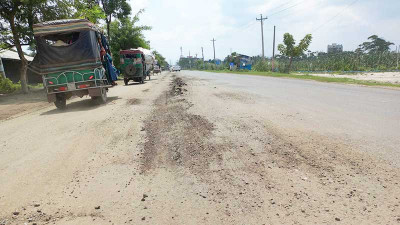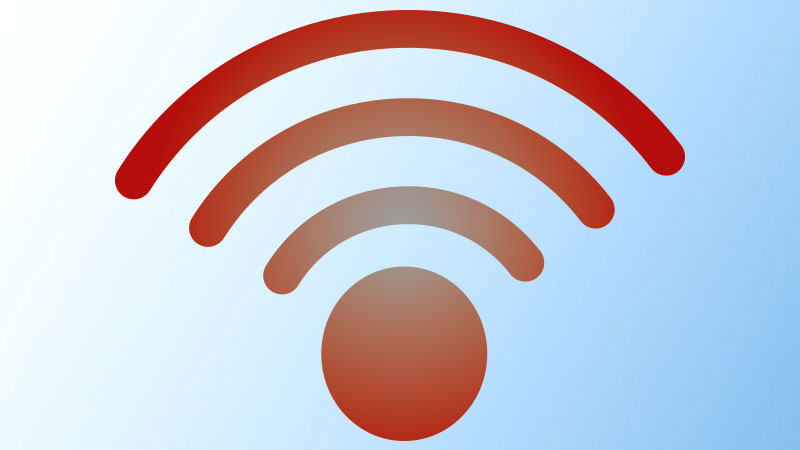 Photo: Bonik Barta
Photo: Bonik Barta Internet supply was
utterly dysfunctional in the country for five days. Although broadband supply
resumed Tuesday (July 23) night, it was in a limited capacity. Mobile internet
service could not be restored. Regarding the internet supply disruption, the
Bangladesh Telecommunication Regulatory Commission (BTRC) informed via SMS last
Saturday through the media wing that restoration work for the damaged data
center and operational lines in Mohakhali, Dhaka, is ongoing, which will
require more time to repair.
Talking to the ICT experts, it is known that there is no possibility of an internet blackout
in the whole country, even if there is a fire incident in one or two buildings
or in one area of the country. Network systems work in different modules. It
includes modules like Ring Topology, Star Topology, Hub, and Spoke Topology.
When one connection of these modules is closed, the other connections remain
active. Due to this, even if a fire breaks out in a building or an area, only
that building or area will have problems. Other connections will remain active.
Mobile operators have
said that “considering the current situation in the country, the government has
temporarily suspended internet services. The resumption of mobile internet
services depends on the government's decision. We are in constant communication
with the authorities regarding this matter.”
While operators have
mentioned the government’s decision to suspend internet services, they have not
cited infrastructure-related issues as the cause for the disruption. When asked
for official comments on the matter, telecom operators refused any formal
statements. However, several officials have indicated that there are no
infrastructure-related issues affecting the operators' internet supply.
Bangladesh Submarine
Cable Company Limited (BSCCL) and six International Terrestrial Cable (ITC)
companies are responsible for connecting Bangladesh to the global Internet
system. Of this, BSCCL brings 50 percent. Six ITC operators bring the remaining
50 percent. Internet bandwidth imported through these companies is managed
through their subscriber operators within the country. These operator companies
are known as International Internet Gateway (IIG), Nationwide Telecommunication
Transmission Network (NTTN), International Gateways (IGW), Telecom Operators,
and Internet Service Providers (ISP) according to the type of work.
According to BSCCL
sources, the company has 184 network operator companies as customers. Among the
primary customers are Summit Communication Limited, Amra Technologies Limited,
BD Hub Limited, BTCL, Earth Telecommunication Limited, Fiber at Home, i-Tel
Limited, Level Three Carrier Limited, Max Hub Limited, Optimax Communication
Limited, Pyrex Network, Teletalk Bangladesh Ltd. Major operators include Dhaka
Colo, Colo City, NRB offices in Mohakhali area. Besides, some other
operators' offices and data centers are in this area. The BSCCL office is
located on Tejgaon-Gulshan Link Road.
Offices and data
centers for most of these operators have been set up in the Gulshan, Tejgaon,
Banani, and Karwan Bazar areas of the capital. Some companies have set up their
data centers outside Dhaka in the Gazipur and Jeshore areas. Besides, telecom
operators are providing 2G and 4G services using the same optical fiber cable.
During the last few days, 2G (familiar voice and SMS service of telecom
operators) services continued.
The Ministry of Posts,
Telecommunications, and Information Technology has recently claimed that due to
the fire in Mohakhali, the data center and transmission lines have been
damaged, and there has been a disruption in the internet supply management
across the country. It is claimed by various parties that the location of these
transmission and data centers is centered on Khawaja Tower and neighboring
buildings. Although the ICT experts said the fact that the internet management
of the country was stopped due to the burning of the transmission cable and
data center in the Mohakhali area is completely unbelievable.
Speaking on the
condition of anonymity, a technology specialist and Dhaka University professor
stated, “Currently, internet services are provided mainly through optical fiber
cables, a significant portion of which were installed by Railways, PGCB, and
Grameenphone. Since the beginning of this century, a large part of these cables
has been managed through GSM technology. The same cables used for transmission
services are also used to provide FTTH services. Therefore, the government's
decision to continue FTTH services while discontinuing GSM services does not
imply any issues with transmission cables; the issues lie elsewhere.”
On Monday, it was
observed in the Mohakhali area that overhead transmission cables were damaged
outside the Disaster Management Department (DMD) building due to a fire
incident. These transmission cables belong to internet service providers such
as ISI, ITCL, NTTPS, and ISPAB. Operators are currently working on reinstalling
these cables. The DMD building is located adjacent to a highly discussed tower
building.
Earlier, on October 28
of the previous year, during the state of political unrest surrounding the
BNP's grand rally, a fire incident occurred at the Khawaja Tower in Mohakhali
on the evening of October 27. Subsequently, discussions first focused on the
building. Following the incidents of fire, internet services across the country
started to slow down gradually. At that time, both the government and internet
service providers stated that incidents of fire in the building had disrupted
broadband and internet services in various districts of the country as the building has several data centers and offices
of broadband service providers in the country.
On speaking with
security guard at Khawaja Tower, it was learned that, at one time, several
telecommunications companies were housed in the building. However, following
the fire incident in October 2023, many of these establishments suffered
damages, and several relocated from here. Now, some new establishments have
arrived, and two additional floors are currently vacant and advertised for
rent.
Speaking on the
condition of anonymity, three security guards of the building mentioned that
the fire incident occurred in a neighboring disaster management building, not
within Khawaja Tower itself. Despite this, everyone is only focusing on Khawaja
Tower. In reality, nothing happened within this building. For the past few
days, the building has been closed due to security reasons.
Adjacent to Khawaja
Tower is the disaster management building where, upon investigation, it is
observed that the basement of the building has been scorched by fire. The
servers of the disaster management setup on the basement floor have been
affected. However, there were no data centers within this building. In front of
the building, optical fiber cables of internet providers and satellite
operators have been damaged.
When asked, Rezwanur
Rahman, the Director General of Disaster Management Directorate told Bonik
Barta on Monday, “We don’t have any data center here. Our building has not been
rented to any private company. There was no data center here. But we had the
disaster management server here. From here, the data of various organizations
related to disaster management was stored. But we are not sure if it has a
backup. We have made a committee to inquire about the damage. These issues will
be known after the committee report.”
Earlier, in a press
conference held at the BTRC building on Sunday afternoon, Zunaid Ahmed Palak,
the State Minister for Posts, Telecommunications and Information Technology,
said, “Government, mobile network operators, ISP operators are not responsible
for breaking the network system, identified miscreants are responsible for
this.” They have taken the student movement hostage to selectively destroy
government buildings and destroy and damage digital cyber and physical
infrastructures to disrupt development activities. Restoring the entire
ecosystem requires us to fix transmission lines, repair data centers, and deal
with technical issues. For this, our engineers have to go physically. We are
trying to figure out how quickly we can restore our internet connection and get
telecommunications back to normal.
According to BTRC
sources, there are currently 30 active International Internet Gateway (IIG)
licenses in the country. These institutions have started setting up nationwide
PoPs from 2021. ISP operators mainly get internet connection from these PoPs.
Apart from
international bandwidth, BTRC has launched the National Internet Exchange (NIX)
to increase domestic bandwidth usage. These organizations include Bangladesh
Internet Exchange Trust, Novocom Nix Limited, Level three Carrier, Digicon
Telecommunication Limited, Summit Communication Limited, etc. Submarine cable
and ITC facilities are expected to have their bandwidth shut down, but domestic
internet connectivity through NIX is expected to continue. No office or
infrastructure of these companies has been damaged.
In a press conference held at BTRC on Sunday, it was also stated that “where the underground cable connects to the pop-up, miscreants have disconnected the internet and dish connection.”
The last-mile broadband
internet connection in Bangladesh is available only in the Dhanmondi area.
Previously, underground fiber optic cables provided connectivity in Gulshan,
Banani, and Mohakhali DHAs, but they are currently unused. Overhead cable
operations are ongoing in these areas. Several entities, such as BTCL, Summit
Communications, PGCB, and Bangladesh Railway, have established a nationwide
optical fiber network spanning 105,871 kilometers. Approximately 15,222
kilometers of this network are underground cables, the rest being overhead and
swapping fibers.
Experts suggest that
through these optical fiber cables established by entities like BTCL, Summit
Communications, PGCB, and Bangladesh Railway, ISPs and telecom operators such
as IIGs, IGWs, ITSC, NIX, and telecom operators provide services. In network
disturbance in a specific area, its impact across the country is considered
highly improbable.
Dr Aurangzeb Mohammad
Abdur Rahman, a professor at the Department of Information and Communication
Engineering at Rajshahi University, said, “We are skeptical. We cannot believe
the explanations given for the internet outage.”
Similarly, speaking on
the condition of anonymity, another technologist remarked, “Even if a data
center goes down, there is always a backup in place called a Disaster Recovery
Module (DRM). Each data center maintains such backup modules. Even if a data
center fails, it could be replaced through DRM. Moreover, there are four-tier
data centers in Kaliakoir, Gazipur. Why the National Data Center has not been
utilized is also a matter of concern.”


